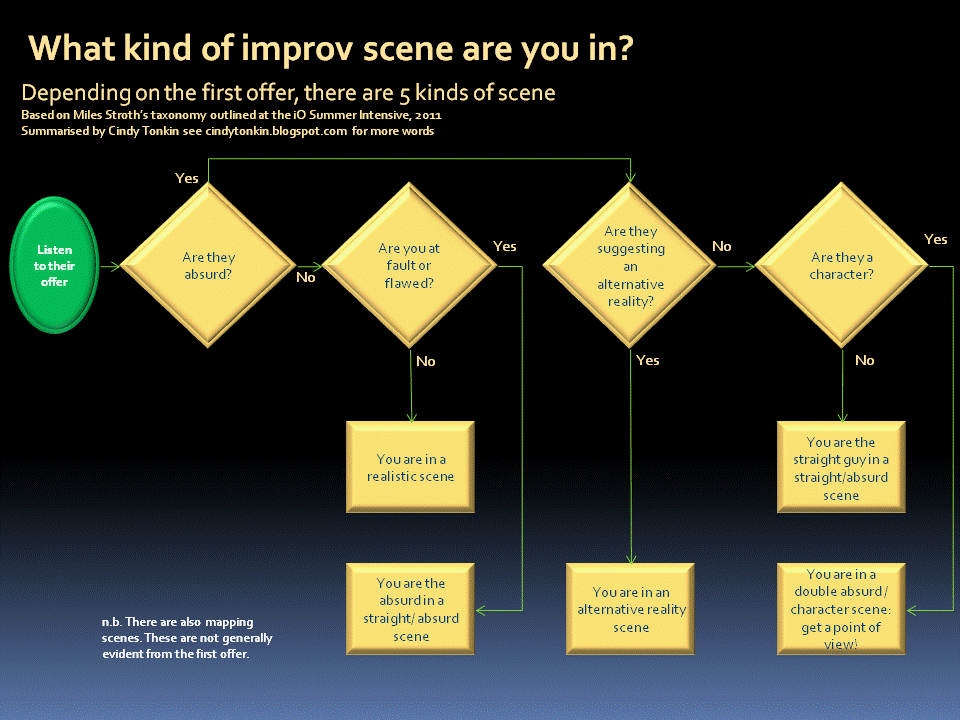| An “art installation” joint work by Erin Foy, Sophie Long and Cindy Tonkin, July 2011 |
I found these notes when i was packing. These are i believe all the notes i have on the deconstruction
.To do the deconstruction you need a handle on the 5 types of scenes (see the chart on the last entry).
First scene must move around emotionally.
In the run:
- Pace is more important than content – pace will take care of bad work
- Good work at the wrong pace is worse than bad work at the right pace
- Characters from the opening scene can appear, but never with each other
- Storyline characters first, then tangents. If there’s a reference in there weave it into the story (batman helping grandpa in WWII)
- Every detail from the opening, 2nd and 3rd scenes can be a scene in the run
- Can do anything in a run, monologues, poems, as long as it’s fast and gets faster
- Will likely end in a scenic rant
- Run is in part the “story” of the first scene
- In a run the characters fromthe opening scene are the straight guys
- Look for “runners” – find a mov which recurs and keep on making it recur
- Make the run “feel” like story, but muck around with it
- The run is in part a La Ronde: all the characters surround the primary event
Watching the end of a decon is like watching 6 people fall down a flight of stairs and land on their feet
After the theme if it’s not abundantly clear why a character in the opening is like they are, then explain (give some back story)
Overall:
- 2 characters introduced: this is art; here are the themes; here’s what we think; here’s what connects them and connections we normally wouldn’t make
- Never end the story before the final scene




